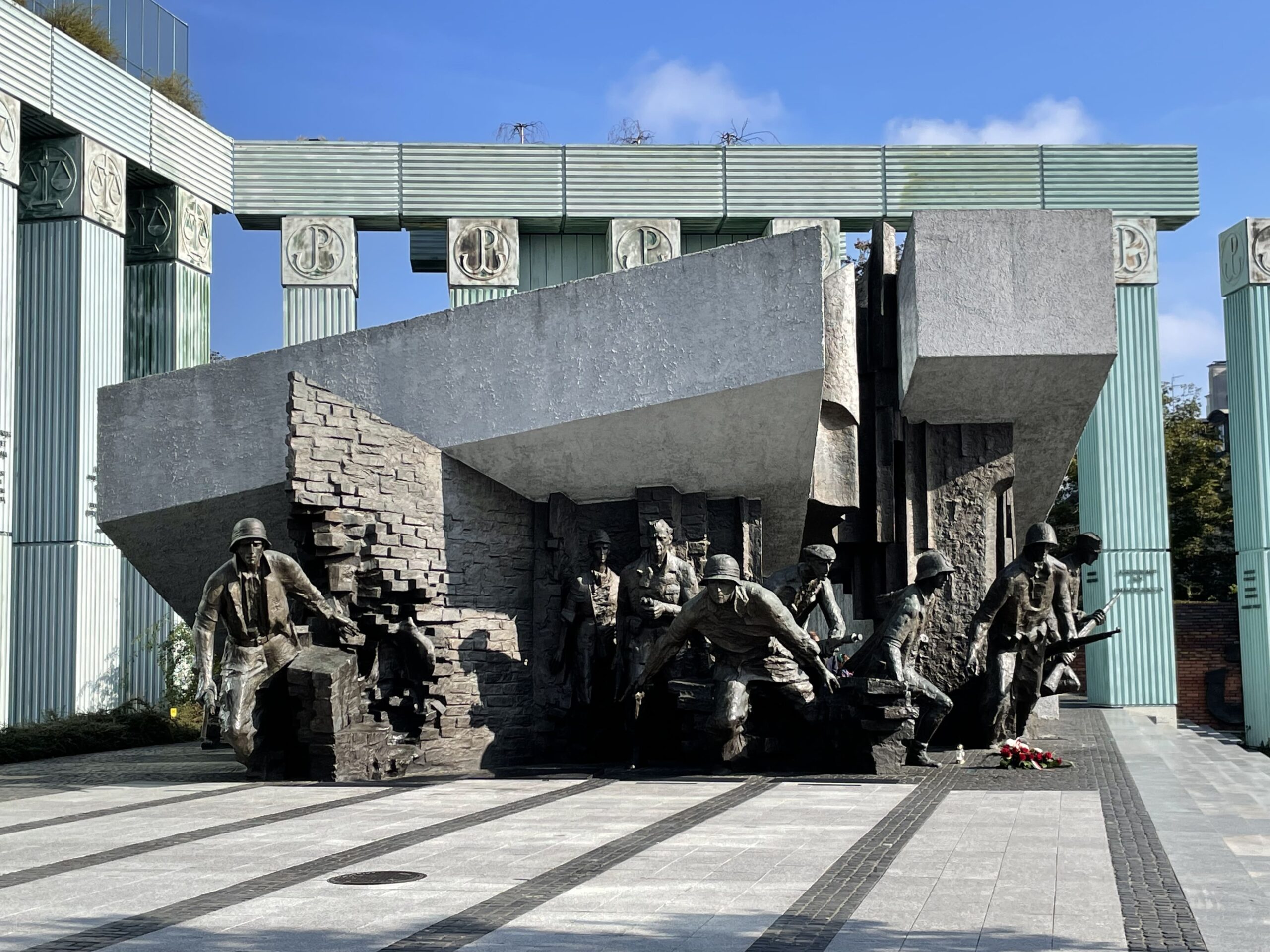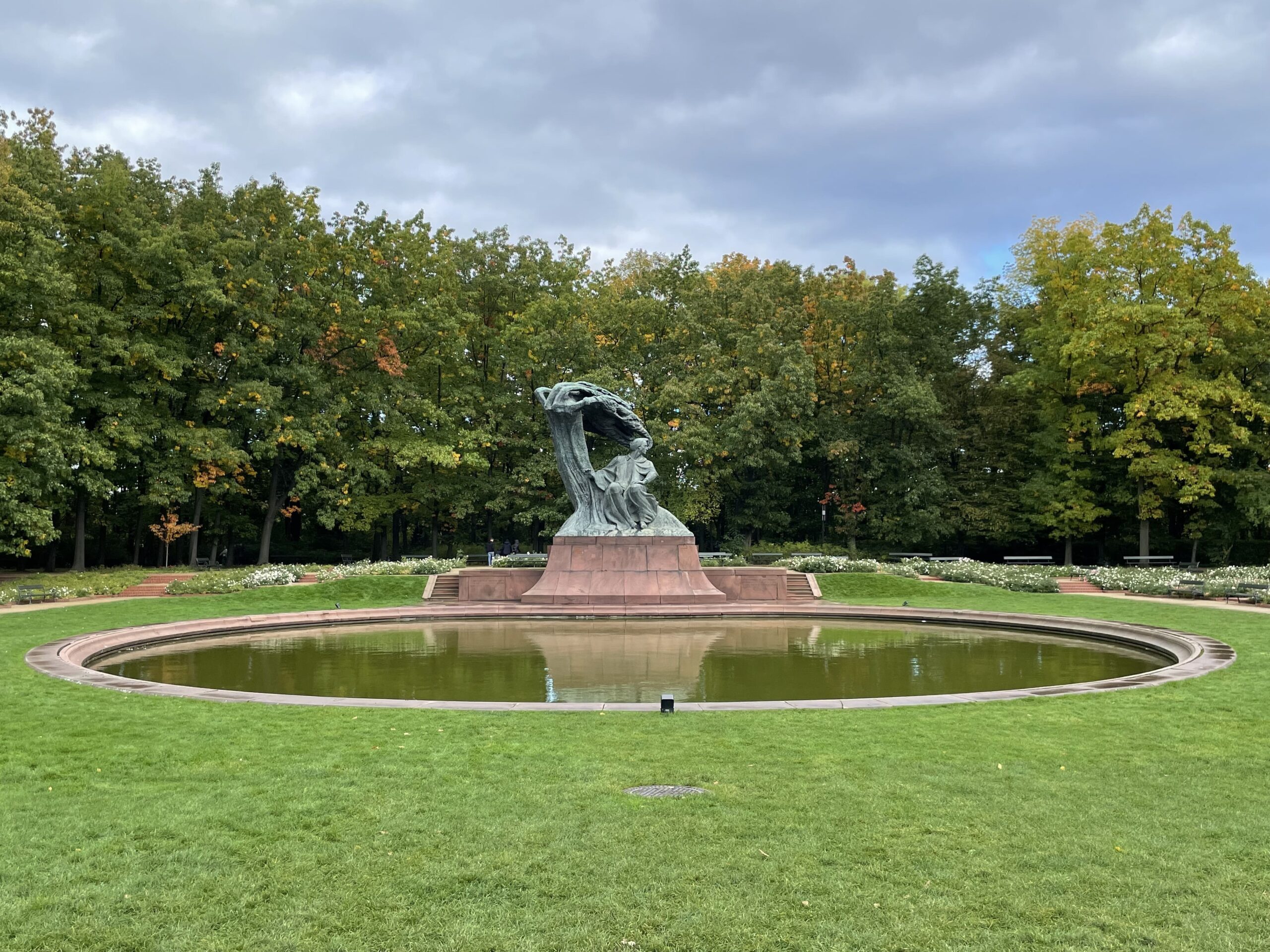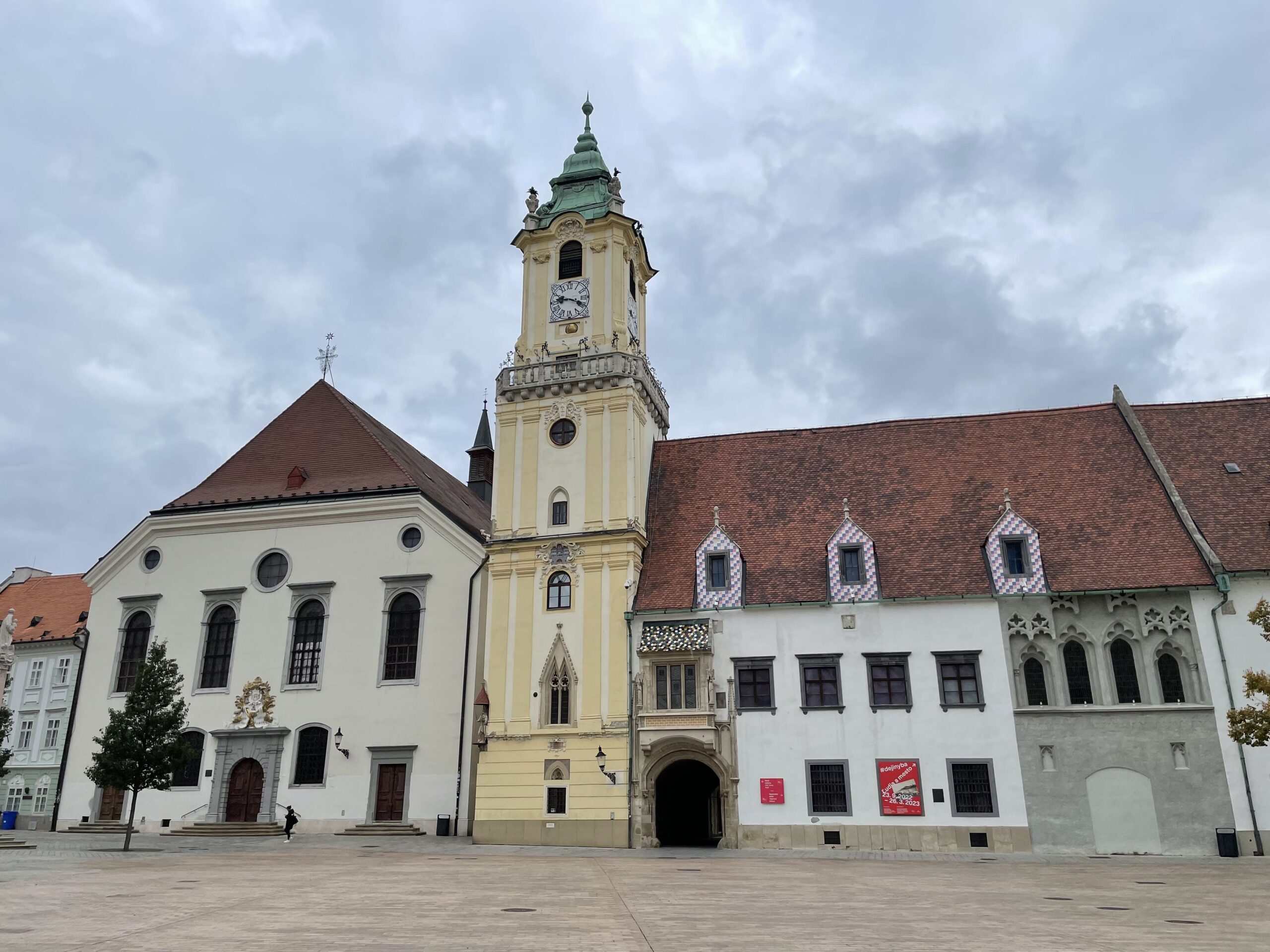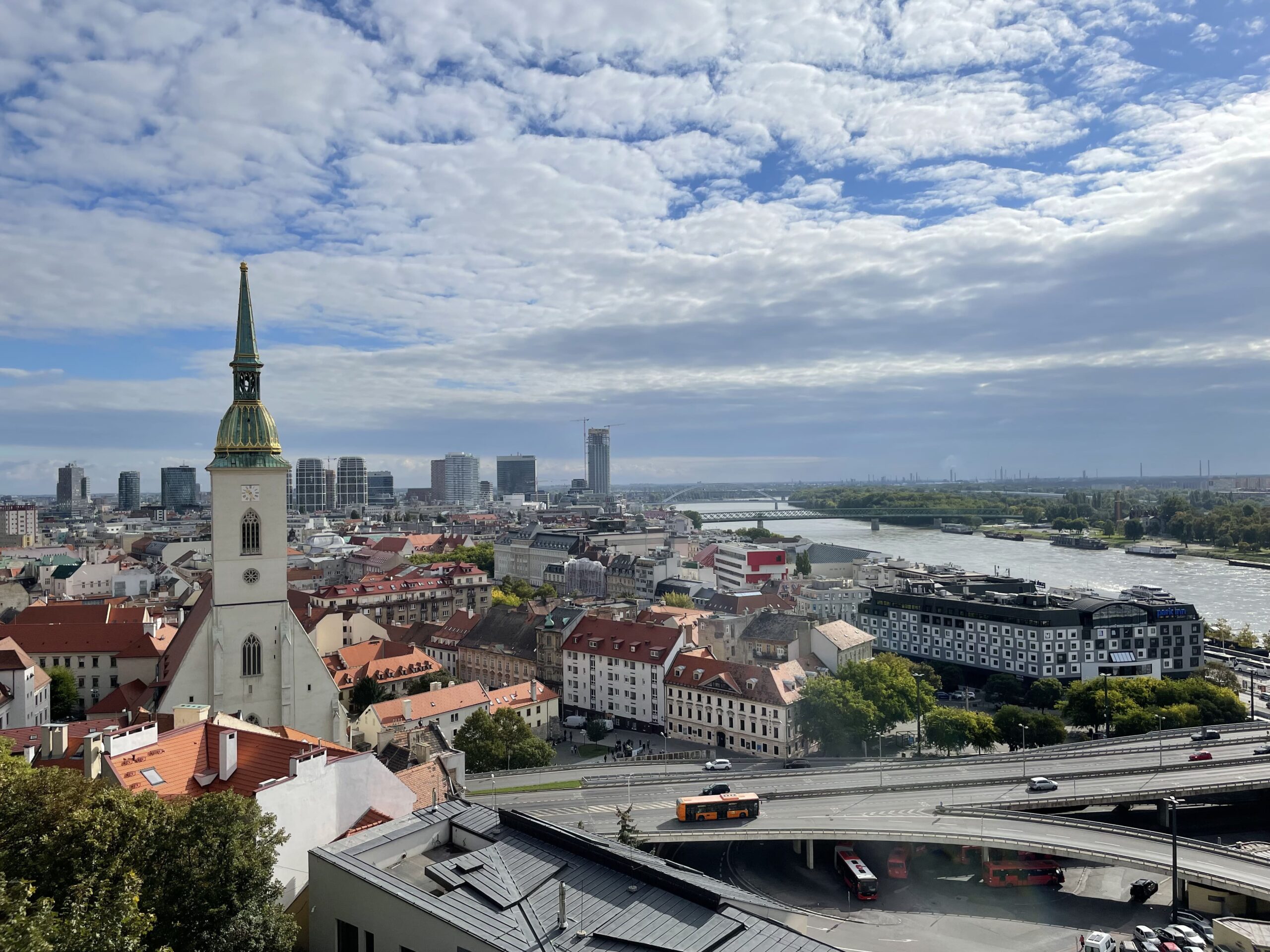<< Introduction
<< Chapter 6: Tallinn, Valga, Riga, Vilnius, Trakai
The next destination of my journey was Warsaw. There are trains that run between Vilnius and the Polish capital, but only on Saturday and Sunday, and I had to travel on a Friday, so instead I took a bus, as this time too I could use a discount thanks to the Interrail pass. The trip took about eight hours, and I arrived in Warsaw almost at 10 p.m.. On the way to the hostel, I got a first taste of the confusing streets of the city, with elevated bridges and viaducts on top of other roads, dark and dirty pedestrian underpasses, and a lot of stairs that made it hard to go around with all my heavy luggage. I usually have a very good sense of direction, but I struggled a bit navigating the roads of the city throughout all my time in Warsaw.
I started my tour by taking a stroll on the road along the Vistula river in the early morning, and I then had to walk for a few kilometers to go and retrieve the train ticket for my next journey. After Warsaw I wanted to go to Bratislava and I had to book a seat for the direct train. Usually you can do that easily on the Interrail website, but that time I had to use another online ticket reservation tool. The only problem about it is that they wouldn’t give me an electronic ticket, but I had to physically collect it and, even more weirdly, not in a train station but at a random minimarket far from any railway stop or the city center. I was a bit anxious about it but in the end everything went smoothly, I got the ticket and so the next part of my trip was safe.
I then explored the area outside the old town, passing by some of the many war and Holocaust memorials, such as the sizable Warsaw Uprising Monument, dedicated to the fighters of the Polish resistance during World War II. I entered the old town through the Barbican, a historic city gate, and then I reached the heart of this area, the Old Town Market Place, which is surrounded by colorful traditional houses that create a really pleasant atmosphere. I visited the Museum of Warsaw, that hosts exhibits on the city’s history, and I enjoyed the view on the Vistula from a panoramic spot nearby. After seeing the Archcathedral of Saint John, I walked on the road along the old city walls, and then I stopped to eat in a restaurant where I had some really tasty pierogi, the traditional Polish filled dumplings.
After lunch I went to visit the lavish Royal Castle of Warsaw, which features numerous ornate rooms including one, known as “Canaletto Room”, filled with outstanding landscape paintings by Bernardo Bellotto, which was actually the nephew of Giovanni Antonio Canal, commonly known as Canaletto. I should note here that the city of Warsaw was almost completely destroyed during its occupation by Nazi Germany during World War II, and a huge effort to rebuild everything was undertaken in the following decades. The many landscape paintings housed in the Royal Castle were used as reference during the city’s reconstruction.
After the Royal Castle, I crossed the popular Krakowskie Przedmieście street, where some people in traditional dresses were dancing and singing, before going to the Tomb of the Unknown Soldier located at the entrance of the historic Saxon Garden. Here, I had to stop for a bit because when Loona had a concert in Warsaw just a few days before the one I went to in Frankfurt, some of the members visited this park and I was able to get a picture in the exact same spot and position as the one that ViVi posted. This was just the start of a crazy stretch of my journey where I hunted down various locations related to Loona in three different countries (read more about my tour of Loona places in Europe here). I walked a bit more around the area, seeing the Church of the Holy Cross and the monument dedicated to astronomer Nicolaus Copernicus in front of the palace hosting the seat of the Polish Academy of Science. After going all the way to the Warsaw City Hall, I finished this really long but rewarding day at the colossal Palace of Culture and Science, which I only saw from the outside.
After such a tiring day I needed something more calm, so I went to the National Museum and I spent the entire morning there. This museum hosts a large art and archaeology collection including a series of Roman coins depicting every emperor, and the Faras Gallery, an exhibition of Nubian art and elements from the Cathedral of Faras, an ancient city in modern-day Sudan now submerged under Lake Nasser. I had lunch at a nearby Vietnamese restaurant and I got to try this country’s cuisine for the first time. I ate a really tasty pho, a soup with noodles and meat considered the national dish of Vietnam, and I also tried some banana fritters.
I moved on to the Ujazdów Castle and the huge and lush Łazienki Park. I spent hours walking around these gardens, which host many wonderful attractions such as the impressive monument dedicated to composer Frédéric Chopin, and especially the striking Palace on the Isle. This richly adorned seventeenth-century palace is located in the middle of a lake and surrounded by trees, in a very pleasant environment. The entire park is really lovely and full of wildlife such as squirrels and peacocks, along with many species of birds. Despite the delightful atmosphere, by this point I was not feeling well, due to the fatigue of the previous day and also because of days of ever-changing weather alternating between cold heavy rains and sunnier moments with hotter temperatures, so I slowly walked back to the hostel.
Nevertheless, my time in Warsaw was mostly positive and I especially enjoyed the charming old town and many parks, although other areas felt much more messy and unkempt. Really messy was also the central train station where I went to take the train to Bratislava, which I boarded after a delay of forty-five minutes. The train kept its delay all the way to the Slovak capital, where I arrived after a nine-hour-long trip, my longest uniterrupted journey on rail in this adventure. A curious thing about this trip was that the destination was marked as Prague/Budapest. At first I did not understand, but it became clear after crossing the border into the Czech Republic. There, the train split in half, with the first part going toward Prague, and the second one continuing to Bratislava and Budapest.
My time in Bratislava was short but enjoyable, it’s a nice and quiet city, and a few hours were enough to see all the main attractions. I wandered around the old town passing by the historic town hall and the adjacent Primate’s Palace. A few peculiar sculptures adorn this area, such as the one depicting a soldier of Napoleon’s Army bent on a bench, and the so-called Čumil, a bronze statue of a worker emerging from the sewers. After seeing Saint Martin’s Cathedral, I climbed the hill to the Bratislava Castle. This massive palace can be seen from almost anywhere in the city, and from the square in front of it a great panoramic view of the Slovak capital can be enjoyed. Back in the old town, I went to see the Church of Saint Elizabeth, also known as Blue Church due to the peculiar color of its walls and decorations. I then had lunch with some delicious bryndzové halušky, the Slovak national dish consisting of dumplings with bryndza, a creamy sheep milk cheese, and topped with pieces of meat.
Since I had already done everything I wanted to do in Bratislava, I looked in the Interrail app to see if I could take the train to Budapest earlier than what I planned. However, my planned journey was not showing up in the app. Searching on the Slovak railways website, it appeared to have been replaced by a bus, but I was not sure that my Interrail pass would be accepted in that case. Luckily, I knew an alternative route through Austria, which was longer but better than risking being stuck, so I headed to the train station. Not the main central station where I arrived in the previous day, but the Petržalka station, specifically built for international connections and located on the other side of the city. It was a long walk made tougher by the heavy luggage, and I had to cross the bridge on the Danube, getting some great views of the river and the castle.
Finally, I got on the train. It was headed to Vienna, but to reach Hungary I needed to change in Parndorf, Austria, and take a train an hour and twenty minutes later to Hegyeshalom, where I would catch a connection toward Budapest. Soon we crossed the border with Austria and, not even ten minutes into the journey, I heard an announcement saying that the train had a problem and had to stop at the next station, it was in German but I understood anyway.
So, we stopped in the tiny train station of Gattendorf, a small village in Austria. The train conductor informed us that a bus was going to come as a substitute, but after forty minutes he told us that no bus was coming and that we would just get on the next train to Vienna that was going to arrive shortly. I finally reached Parndorf one hour later than I anticipated, but luckily my connection was still twenty minutes away. After another short trip I was in Hegyeshalom, Hungary, just in time to catch the train to the Hungarian capital. This trip took two hours and, after this wild journey from Bratislava, I was finally in Budapest.
Chapter 8: Budapest, Szabadkígyós, Pécel >>



















